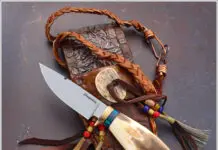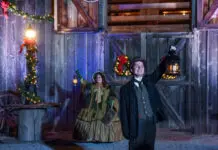American Airlines
Tulsa
International Airliner
Employees (OK): approx. 7,000 Hiring in 2012: Yes
In Oklahoma, American Airlines focuses on maintenance, repair and overhaul of aircraft, engines, landing gear, components and APUs for American Airlines and third parties.
Good Neighbor
American Airlines Maintenance and Engineering Center supports Tulsa and surrounding communities extensively by supporting more than 100 agencies through volunteerism, corporate donations or in-kind donation of airline tickets. Among numerous other efforts, AA employees are the largest blood donors in the Tulsa area, and employees adopt the largest number of Salvation Army Angel Tree children each year.
American Fidelity Assurance Company
Oklahoma City
Insurance
Employees (OK): 1,070 Hiring in 2012: Yes
American Fidelity Assurance Company provides insurance products and financial services to education employees, trade association members and companies throughout the United States and across the globe.
Healthy and happy colleagues
AFA is devoted to the health of colleagues, and a free on-site medical clinic, on-site fitness center complete with a personal trainer, on-site Weight Watchers classes and companywide walks and programs all contribute to the culture. Colleagues also participate in fun activities sponsored by senior management as a way to express appreciation for a job well done.
The Bama Companies, Inc.
Tulsa
Commercial Baking
Employees (OK): 960 Hiring in 2012: Yes
Since the 1960s, Bama has been an innovator of wholesale bakery products that cater to the needs of the largest and most well known restaurant chains on the planet. Today, the company supplies innovative culinary and product development services and custom-made, oven-ready products to customers in more than 20 countries.
Investing in its assets
Bama focuses on improving the length and quality of life of its team members and their families. Programs include a free on-site health clinic, fitness centers, wellness programming and chronic condition management, allowing Bama to invest in the respected company’s number one asset: its team members.
Bank of Oklahoma
Tulsa
Banking, Financial Services
Employees (OK): 2,900 Hiring in 2012: Yes
Bank of Oklahoma was founded more than 100 years ago and is part of BOK Financial, a $24 billion financial services company. Its operations include commercial and consumer banking, investment and trust services, mortgage origination and servicing and an electronic transfer network.
Committed to communities
Bank of Oklahoma employees are extremely committed to their communities. As a company and as individuals, BOK works to make communities the best they can be. Executive team members in Tulsa and Oklahoma City are fixtures with both cities’ United Way chapters, and BOK employees organize fundraisers and make annual contributions.
Cardinal Engineering
Oklahoma City
Consulting Services
Employees (OK): 68 Hiring in 2012: Yes
Cardinal Engineering is a consulting firm providing environmental, engineering, surveying and GIS services.
Supporting social responsibility
Through its Cardinal Social Responsibility Program (CSR), employees may request that Cardinal donate money to a nonprofit organization of their choosing and with which the employee is actively involved. The CSR program is run by employees, not management. This has encouraged Cardinal employees to be more active in the community and resulted in a wide diversity of charitable donations. In 2010 the CSR program resulted in 2,765 hours worked and nearly $15,000 in monetary and in-kind donations alone, helping better the community and anchor the company in it.
Chesapeake Energy Corporation
Oklahoma City
Oil and Natural Gas Production
Employees (OK): 6,648 Hiring in 2012: Yes
Chesapeake is the second-largest producer of natural gas, a top 15 producer of oil and natural gas liquids and the most active driller of new wells in the U.S. The company has also vertically integrated its operations and owns substantial midstream, compression, drilling and oilfield service assets.
Nurturing the next generation
In its 17th year, the Chesapeake Mentoring Program provides Oklahoma City students with caring adults who serve as positive role models and promote academic success. Nearly 500 Chesapeake employees volunteer weekly in four inner-city schools on company time. After starting with just one school and a handful of employee volunteers, the Chesapeake program has grown to become the largest corporate mentoring program in the state of Oklahoma.
Continental Resources
Enid
Oil and Gas Exploration and Production
Employees (OK): 400 Hiring in 2012: Yes
Continental Resources focuses its exploration activities in large, new or developing plays that provide the opportunity to acquire undeveloped acreage positions for future drilling operations. Continental currently holds the largest acreage position in the coveted Bakken resource play in North Dakota and Montana, and it is the largest producer of oil in the Williston Basin region.
Gifts for angels
Continental Resources employees are known for their generosity. For seven years, Continental families have participated in the Garfield County Angel Tree project, providing toys and warm clothing to local children. Each holiday season, Continental employees provide for gifts for 75 to 150 Angels. This is in addition to the many United Way fundraisers employees contribute to annually.
Devon Energy
Oklahoma City
Oil and Gas Exploration and Production
Employees (OK): 1,700 Hiring in 2012: Yes
Devon’s operations are focused onshore in the United States and Canada. It also owns natural gas pipelines and treatment facilities in many of its producing areas, making Devon one of North America’s larger processors of natural gas liquids. The company’s portfolio of oil and gas properties provides stable, environmentally responsible production and a platform for future growth.
Lending a helping hand
Employees raised more than $350,000 plus vast quantities of food this year for the Regional Food Bank’s annual food drive. Combined with the company’s match, they contributed $700,375, which represented the majority of the agency’s total collection during its annual campaign. Additionally, employees responded in droves for the Food Bank’s “Stuff the Truck” event.
Dollar Thrifty Automotive Group
Tulsa
International
Automobile Rentals
Employees (OK): approx. 957 Hiring in 2012: Yes
Driven by the mission, “Value Every Time,” the company’s brands, Dollar Rent A Car and Thrifty Car Rental, serve value-conscious travelers in more than 80 countries by providing budget-friendly rental cars. Dollar and Thrifty have approximately 1,575 corporate and franchised locations worldwide, including approximately 600 in the United States and Canada. The company maintains a strong presence in domestic leisure travel in virtually all of the top U.S. and Canadian airport markets.
Employee loyalty
In its toughest times, Dollar Thrifty found its strongest support in its own employees, who one prominent business observer in Oklahoma credited for the company’s notable turnaround.
Good Year Tire & Rubber Company
Lawton
Tire Manufacturing
Employees (OK): approx. 2800 Hiring in 2012: No
Good Year’s Lawton plant manufactures radial passenger and light truck tires.
Pillar of the community
Oklahoma’s two largest cities have scores of corporate citizens to support community initiatives. But in Lawton, Good Year – the city’s largest employer, second only to Fort Sill – has stepped in to fill that void consistently over the past 30 years with holiday programs for area children and support of numerous charities and community events, including raising more than $730,000 for the Lawton United Way last year. The plant’s employees are equally looked after with an on-site medical center, a recreation association to plan events and even on-site college courses for associates.
Kimray Inc.
Oklahoma City
Energy Sector Manufacturing
Employees (OK): approx. 957 Hiring in 2012: Yes
Kimray is an Oklahoma-based manufacturer of control valves and related equipment for oil- and gas-producing companies worldwide.
Charity begins at work
Each year, Kimray donates to flagship organizations that support arts, youth, community, health, education and ministry. Kimray also matches employee contributions to charitable nonprofit organizations up to $2,500 per employee per calendar year. Kimray believes its greatest asset is its employees. For that reason, the company offers first-class benefits and pay. Employees enjoy a paid vacation day on their birthday, tuition reimbursement and access to an on-site wellness coordinator, in addition to numerous other benefits.
NORDAM
Tulsa
Aerospace
Employees (OK): 1,705 Hiring in 2012: Yes
NORDAM is one of the world’s largest, independently owned aerospace companies.
Healthy stakeholders
The people-oriented aerospace giant doesn’t have “employees;” it has “stakeholders” who enjoy specialized health and wellness offerings, including such perks as financial reimbursements for check-ups and screenings; discounts for fitness programs; organized exercise and dance clubs; on-site screenings, health fairs and wellness courses and other ad hoc events. The company is also a driving force behind Tulsa Charity Fight Night, with stakeholders helping create this event to raise awareness and funds each year for multiple local charities.
Oklahoma City Thunder
Oklahoma City
Professional Sports
Employees (OK): 152 full-time and 198 part-time Hiring in 2012: Yes
The Oklahoma City Thunder is the National Basketball Association’s Oklahoma City franchise. The team plays in the Northwest Division of the Western Conference. The Thunder’s home court is the Chesapeake Energy Arena.
Work hard, play hard
In addition to great traditional benefits, the Thunder keeps staff fresh, rewarded and in good spirits with such things as staff appreciation events on average once a month, numerous three-day weekends in NBA offseasons, quarterly happy hours, in-season lunches, holiday events, gym membership subsidies, education reimbursement and numerous other benefits and incentives, in-season and off-season.
ONEOK Inc.
Tulsa
Diversified Energy
Employees (OK): approx. 2,400 Hiring in 2012: Yes
ONEOK is among the largest natural gas distributors in the United States, serving more than two million customers in Oklahoma, Kansas and Texas.
Supporting one another
ONEOK’s ONE Trust Fund is a unique way for employees to support their co-workers in times of need. The ONE Trust Fund is a voluntary assistance program created to help employees in times of personal crisis due to natural disasters, medical emergencies or other hardships. Employees support the fund by donating money or unused vacation days. An Oklahoma City employee who benefited from donated vacation time during a serious illness put it this way: “I cannot thank ONE Trust and the employees who donate their vacation time enough. This is a great company!”
QuikTrip
Tulsa
Gas Stations,
Convenience Stores
Employees (OK): 1,200 Hiring in 2012: Yes
QuikTrip is a gasoline marketer and operator of convenience stores in numerous states around the U.S.
Check Your Egos
QuikTrip corporate employees know that egos must be checked at the door of this company, whose offices are as upbeat as its individual stores’ staffs. QuikTrip boss Chet Cadieux is known to walk around in a Hog’s Breath t-shirt and shorts, tripping up the occasional visitor who’s unaware that while employees work hard at QT, they also have a good time. Of course, good cheer is easy for a company as generous and supportive as this Oklahoma icon, with tremendous benefits for staff, from store team members to executives, and a record of promoting from within.
Samson
Tulsa
Natural Gas Production
Employees (OK): 770 Hiring in 2012: Yes
Founded in 1971, Samson is the largest privately held producer of natural gas in the United States. Samson is a leader in horizontal drilling and completion methodologies utilizing sound engineering technologies. It operates more than 4,000 oil and gas wells and holds interest in more than 11,000 additional producing properties.
Giving back
Samson supports a litany of community causes, including the United Way, Big Brothers Big Sisters, American Red Cross, Habitat for Humanity, Meals on Wheels and numerous other charitable causes and charities. Samson’s support also includes a variety of local drives and projects that provide encouragement and support to the arts and for community development in Tulsa and beyond.
TD Williamson
Tulsa
Pipeline and Piping System Maintenance and Repair Solutions
Employees (OK): approx. 524 Hiring in 2012: Yes
TDW delivers a comprehensive portfolio of safe integrity solutions for onshore and offshore applications, including hot tapping and plugging, pipeline cleaning, integrity inspection, pigging, rehabilitation and non-tethered plugging pig technology for any pressurized piping system, anywhere in the world.
Friends in need
TDW gives back to its employees internally through the LifeTAPP program, an emergency disaster relief program that provides emergency grants for temporary assistance to its employees for situations like hurricanes, tornadoes, fire damage, death in the family or prolonged illness of a loved one. The LifeTAPP dollars that employees donate are matched dollar for dollar by the company, and are managed through a fund at Tulsa Community Foundation.
Williams Companies
Tulsa
Natural Gas Exploration, Production, Transportation
Employees (OK): 1,300 Hiring in 2012: Yes
Williams is an integrated natural gas company focused on exploration and production, midstream gathering and processing and interstate natural gas transportation primarily in the Rocky Mountains, Gulf Coast, Pacific Northwest, Eastern Seaboard and the Marcellus Shale in Pennsylvania.
United Way is the Williams way
In 2011, Williams’ United Way campaign in Tulsa topped $2 million for the first time. It marked the 21st straight year the company raised more than $1 million for the Tulsa Area United Way. In the early 1990s, Williams employees also helped establish the first Day of Caring volunteer event, which since has been replicated in many other cities. This year, more than 560 Williams employees participated in the Tulsa Area United Way Day of Caring.























